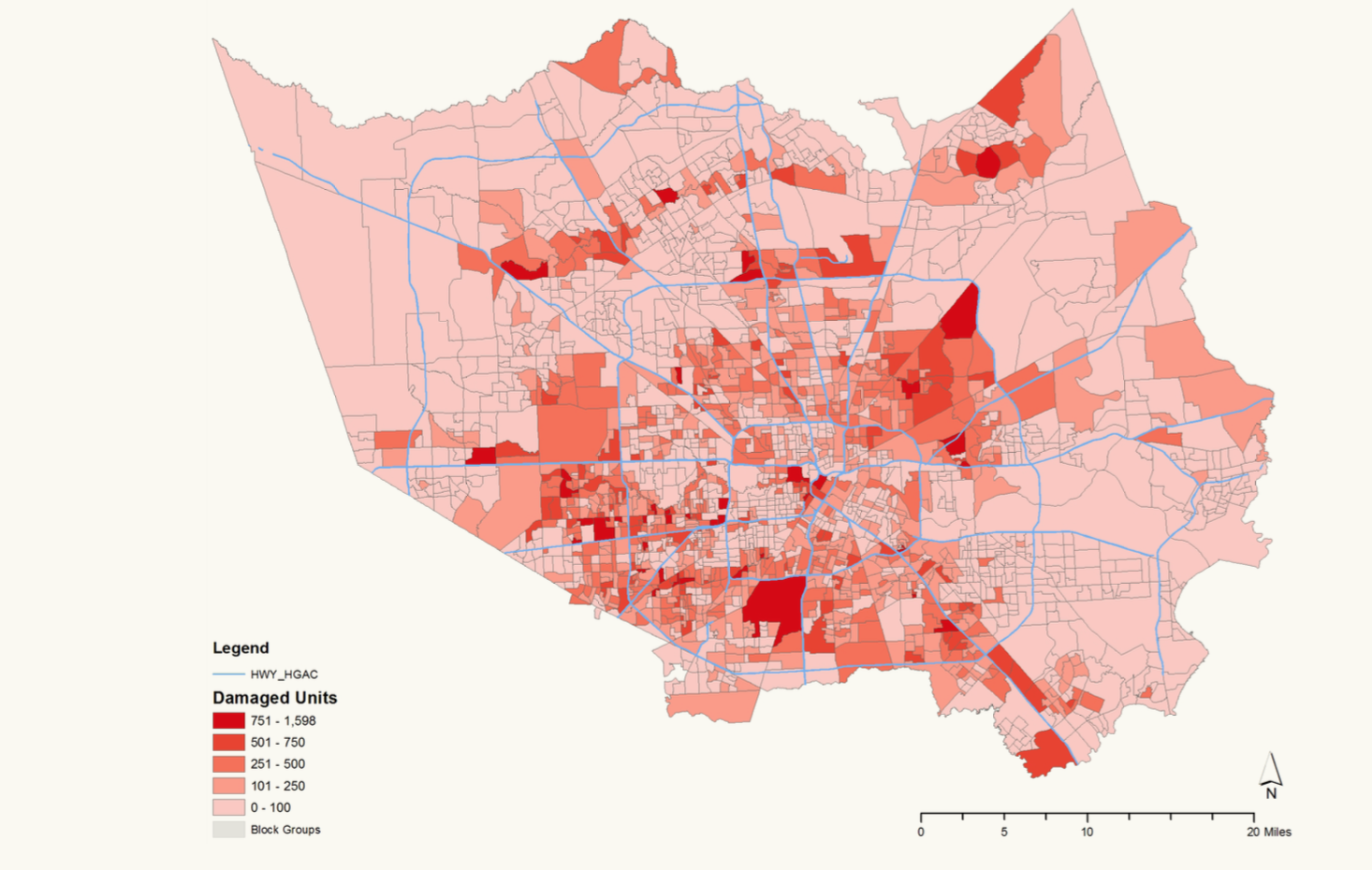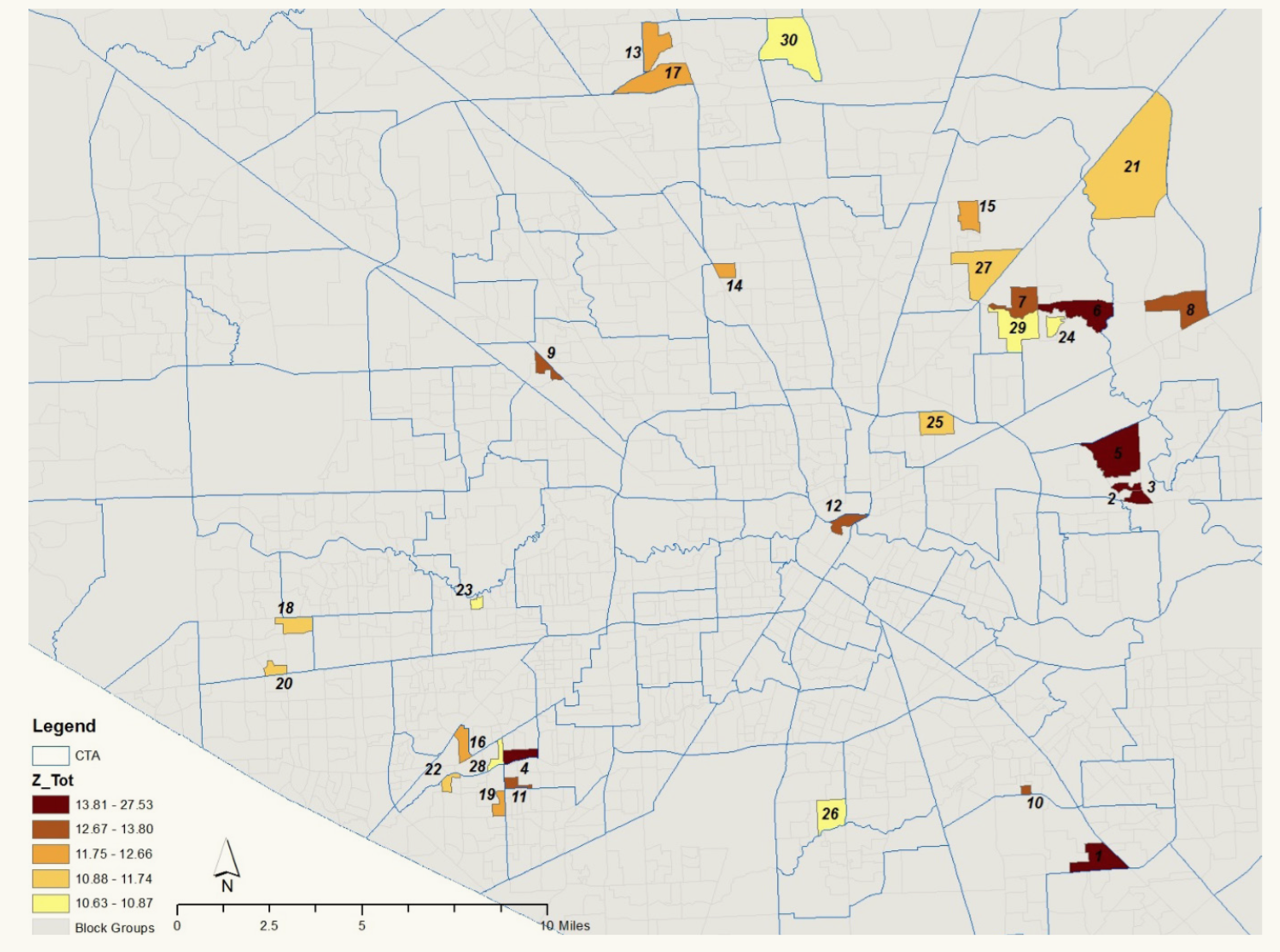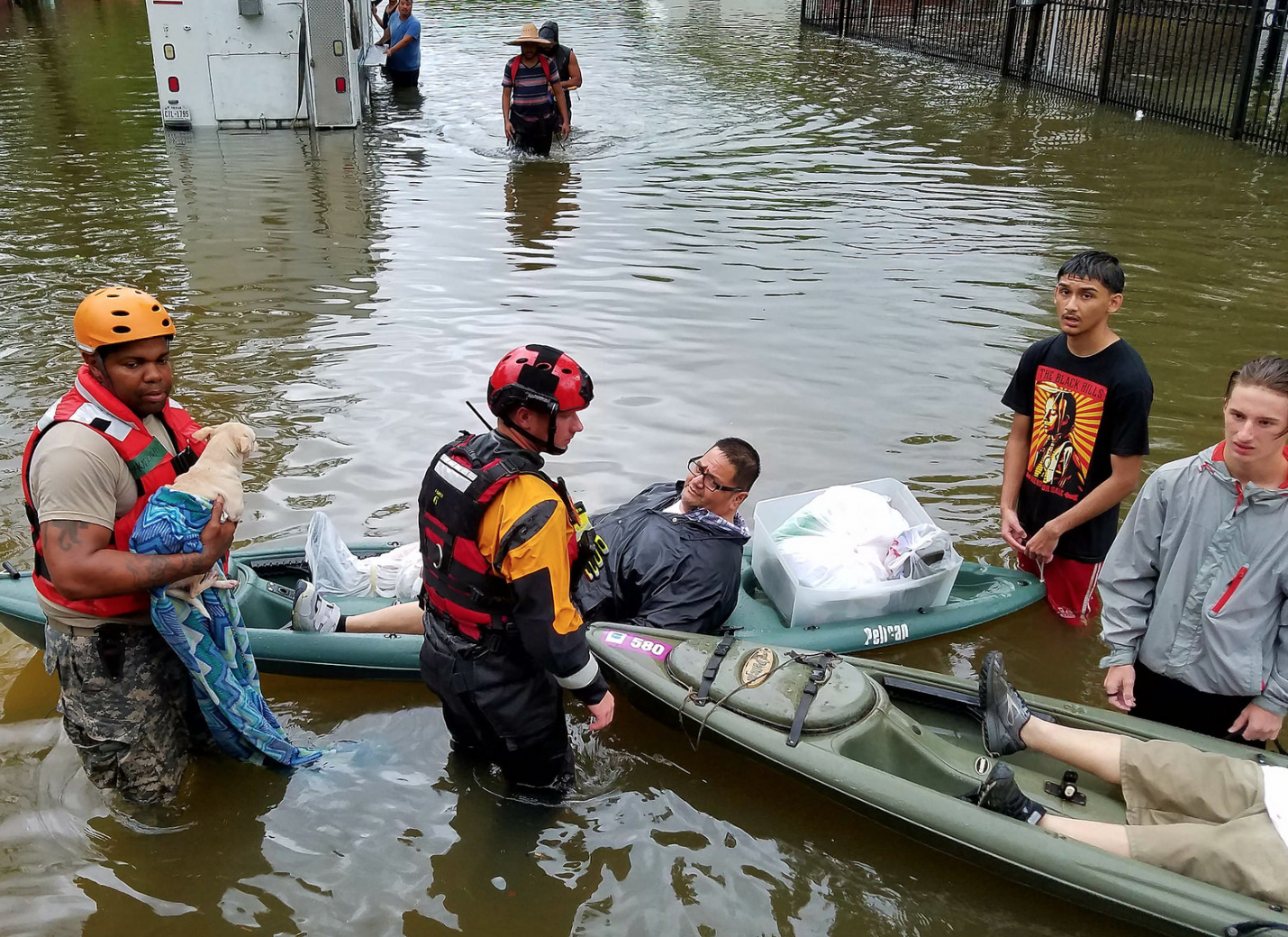After Hurricane Harvey, calls poured into the 211 helpline operated by the United Way of Greater Houston. People were seeking help with everything from housing and rent to food and other social services. In the seven weeks following the storm, Harvey-related call volume went from over 21,000 calls in the first week after the storm to just under 6,000 seven weeks out.
But a follow up analysis tracking 211 calls through 14 weeks after the storm, plus an analysis of other data, revealed persistent demand for services, including among older residents, renters and callers from lower-income, non-white zip codes.
Overall, the report estimates some 20 percent of Harris County residents or roughly 307,000 households were affected by Hurricane Harvey, meaning their housing suffered some damage during the storm. Another recent multi-county survey on affected individuals from the Episcopal Health Foundation, which intentionally oversampled lower-income, black and Hispanic residents as well as those living in areas identified by FEMA as having the most damage, estimated that 38 percent of Harris County respondents had some sort of home damage due to the storm, with 15 percent reporting major damage and 23 percent reporting minor damage.
The needs assessment by the Kinder Institute for Urban Research was conducted for the Greater Houston Community Foundation and the Hurricane Harvey Relief Fund and relied on data from the Federal Emergency Management Agency, the American Red Cross’ Coordinated Assistance Network and 211 as well as data from the city, county and multiple non-profit groups.
The Hurricane Harvey Relief Fund, set up by the County Judge and Houston mayor, and administered by the Greater Houston Community Foundation, is using this data to direct their remaining funds to the highest needs among vulnerable populations
The most recent analysis provides a look at what the ongoing and emerging issues are for people affected by Harvey more than two months after the storm.

Source: Kinder Institute for Urban Research.
But the need was not evenly spread across the county.
Some of the most persistent need, measured by the percentage of 211 calls during the eight to 14 weeks after the storm compared to those made from the area during the first seven weeks after, was in Acres Homes in the northwest, South Park and OST/South Union in the southeast and Kashmere Gardens in the northeast, along with several other neighborhoods listed below.
Those neighborhoods also had above average call volume.

Source: Kinder Institute for Urban Research.
“The top needs are disaster-related case management, electric service payment assistance, rent payment and housing assistance, temporary financial aid and food assistance,” the report notes. In fact, utility and housing assistance requests were actually higher eight to 14 weeks after the storm than they were in the first seven weeks following the storm.
These findings were not significant departures from a similar analysis of the first seven weeks after the storm, though there was an understandable shift in call types to 211 from emergency needs to things like housing assistance and repair.
The analysis revealed not just places but particular populations where unmet need appeared to be highest, including for older residents, renters and people of color.
Callers over the age of 50 “maintained the highest volume of calls to the system,” in the second half of the study period counting unique callers.
And though both homeowners and renters are falling short when it comes to FEMA assistance, renters, who often don’t qualify for some types of federal aid, including rebuilding assistance, had much lower approval rates. A little less than half of the homeowners who applied for assistance received some kind of financial assistance but only 34 percent of renters were approved.
Roughly 46 percent of the affected population in Harris County was Hispanic, according to the analysis. Non-Hispanic black people made up a quarter of the Harvey-affected population in Harris County.

Top 30 socially vulnerable population concentrated Census block groups with substantial Harvey damage.
Source: Kinder Institute for Urban Research.
The report also acknowledges the ongoing data limitations that often frustrate recovery efforts. “Numerous vulnerable populations were hit extremely hard. The recovery of these groups will be long-term and will need support,” the report mentions, including "“the elderly and renters as two groups that likely remain in need of services.”
But, the report continues, “other socially vulnerable groups such as undocumented immigrants and people with disabilities are harder to link to specific geographies.” They will, however, “still require additional attention” for the recovery to reach all those in need.
Read the full report here.

